


Distance learning, learning at home, crisis homeschooling – no matter what you call it, most of us are doing it. And it’s hard. I’m in the same boat with all of you! Working from home and setting up a homeschool schedule to help my own children was a challenge. I finally found a schedule that works really well for my family, and I hope you can find some inspiration to make a distance learning schedule that works for your family.
First, I want to bust a misconception about learning at home right now. Although students are at school from 8:00-3:00, you don’t need to do “school work” with your children for seven hours a day. At school, one teacher is teaching 20+ students at a time. That requires more time for all subjects plus lunchtime, specials, and transition time.
At home with one to several children, you can help them master their standards in a shorter amount of time.
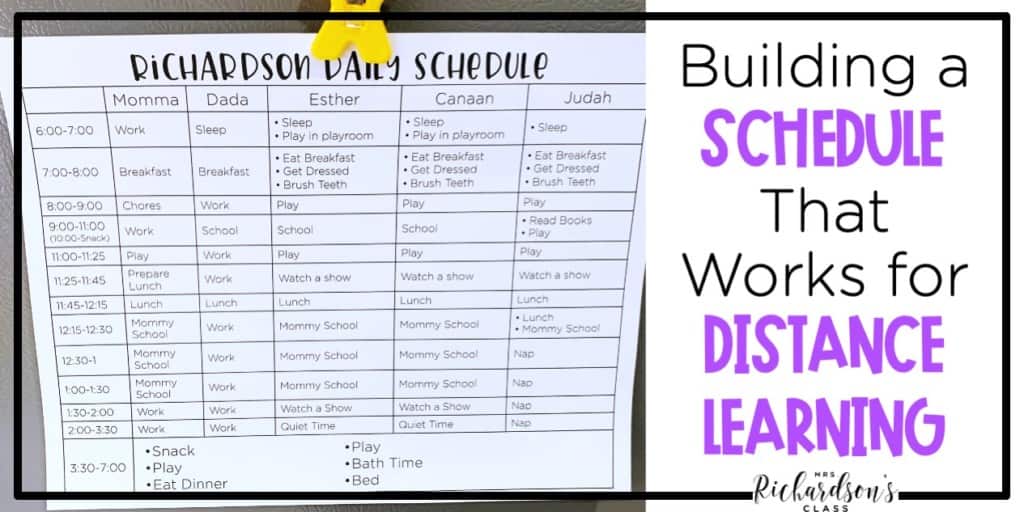
**Amazon affiliate links are used below at no cost to you.
At school, students work on “morning work” so the teacher can take attendance, turn in lunch order information, and go through folders to look for important notes. You could set up a time for yourself to be able to prepare for the day, too. This will help you feel more organized when you get started. You can see what I did for morning work in THIS POST. Most of these will work at home, too!
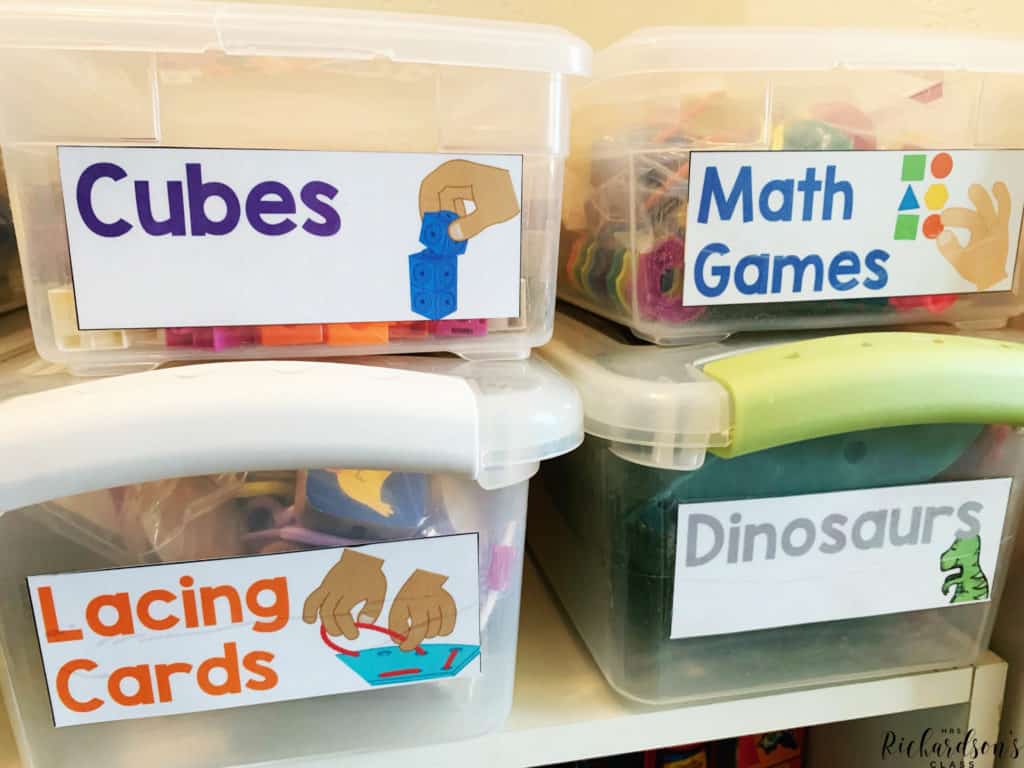
For our family, we use breakfast time as a whole group to talk about the plan for the day, set expectations for everyone, and do our daily family devotional. I have some friends who also use breakfast to read a book aloud to the whole family.
In my family’s schedule, after breakfast, I built in an hour of morning playtime so I could gather books and supplies that I’ll need for the day to do school with my two oldest kids. You can also use this time to do any morning chores you might want to get done.
If you start with your family schedule, you’ll be able to see how and when you can fit in school time. I shared four tips for setting up for homeschooling HERE. You can block out times when you and/or your spouse are at work (or working from home time), lunch, naps, etc.
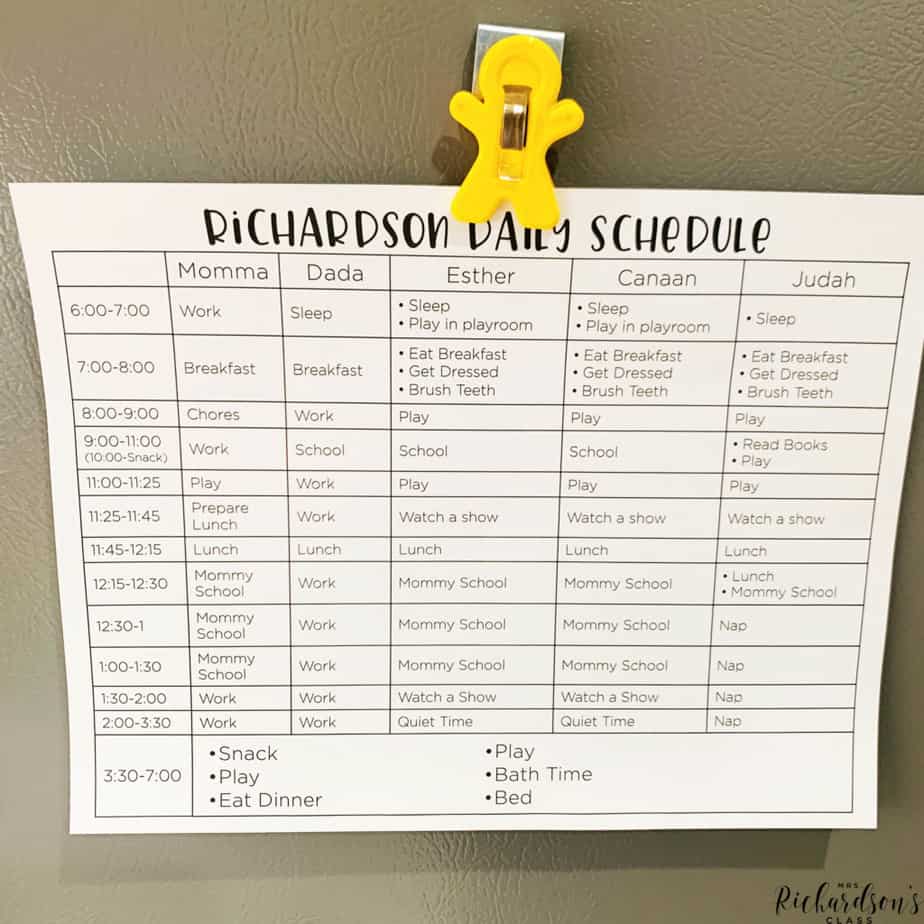
For our family, we have two working parents, two school-aged kids, and a toddler. I needed to write down our schedule so we could easily manage our day. You’ll see that we built in a few hours a day for school. Remember, you don’t need seven hours of school time a day.
If you just can’t find a few hours in your day Monday through Friday due to working outside of the home, that’s okay. This isn’t typical homeschooling – it’s more like crisis homeschooling. Do what you can during the week, and use the weekends to squeeze in school work.
Grab a pencil and paper (or computer) and write down the content you need to cover in your homeschool schedule. Do your best to work out a plan that works best for your kids.
When I created my kids’ school schedule and content to teach, I tried to include these things:
Here is a peek at what we did one week. Is it perfect? Absolutely not! But the kids learned and I kept my sanity! 😉
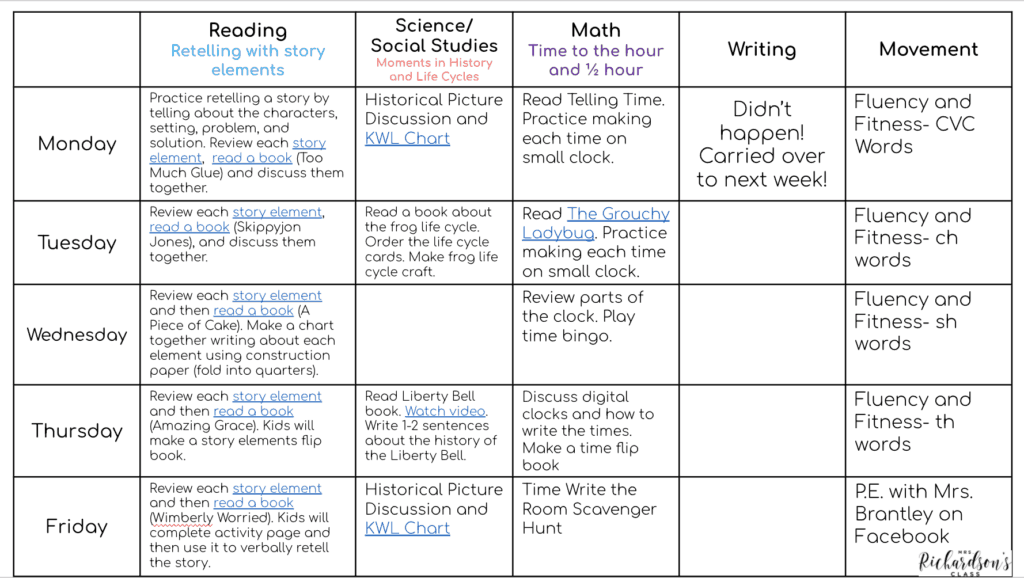
I decided to write out a week at a time for all subjects: reading, writing, math, science and social studies, and physical movement.
I tried to choose activities that I already had or that the school provided us. Finally, I also tried to implement things I can do with both of my kids at the same time since they’re so close in age.
One common question I hear is, “How long do I spend on each subject?”. I want to encourage you that there is no right or wrong answer. I will share some guidelines, but please don’t feel like this is what you have to do to be successful.
As you can see, this only adds up to a few hours a day, which is all you’ll need. Intentional time teaching kids one-on-one or in a small group at home really makes a difference in learning.
Setting up stations are a great way for kids to have meaningful tasks to do and for you to be able to work one-on-one with one of your kids if you have multiple that you are homeschooling. When we do stations, one of my kids does a station for 15 minutes, and the other one works with me to do a phonics lesson.
Some ideas for stations could be:
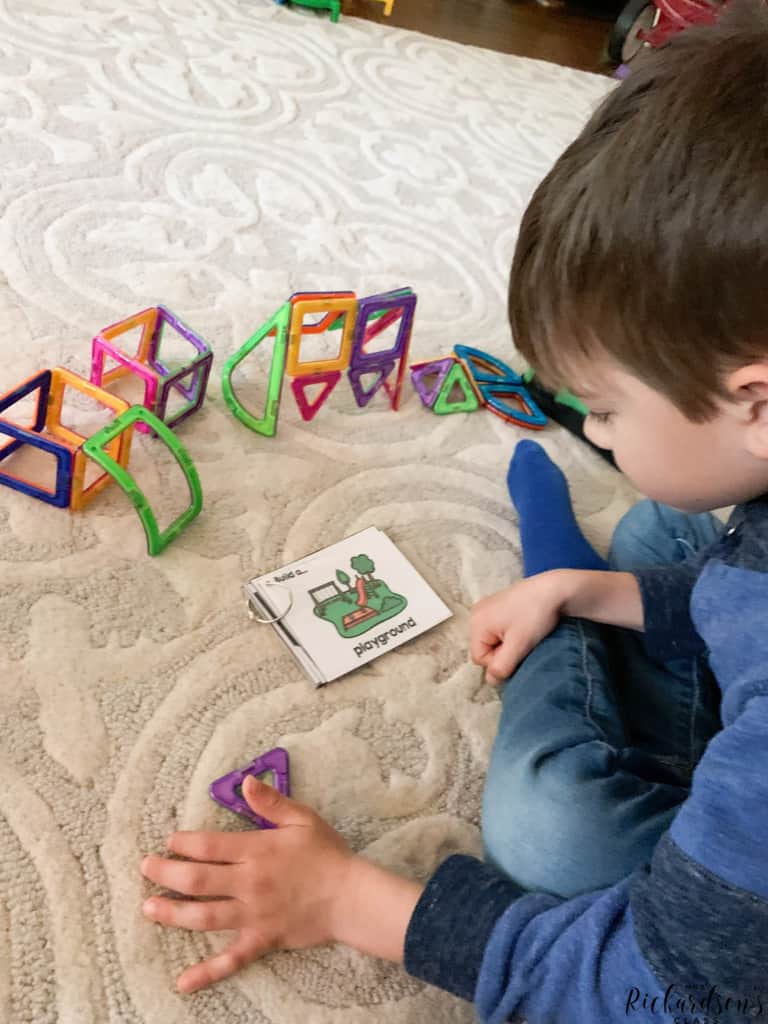
The main idea behind stations is for children to be doing something meaningful and educational that they can do independently. You can make them easy for yourself like the ones on this list so you’re not recreating the wheel.
When kids are at school, teachers build in plenty of brain breaks for kids to get a chance to stretch their legs and refocus. Brain breaks can be short or long, depending on what you’re needing. You can do a short brain break (5 minutes) in between activities or a longer break (15-20 minutes) in between subjects. Here are some ideas for brain breaks for all ages:
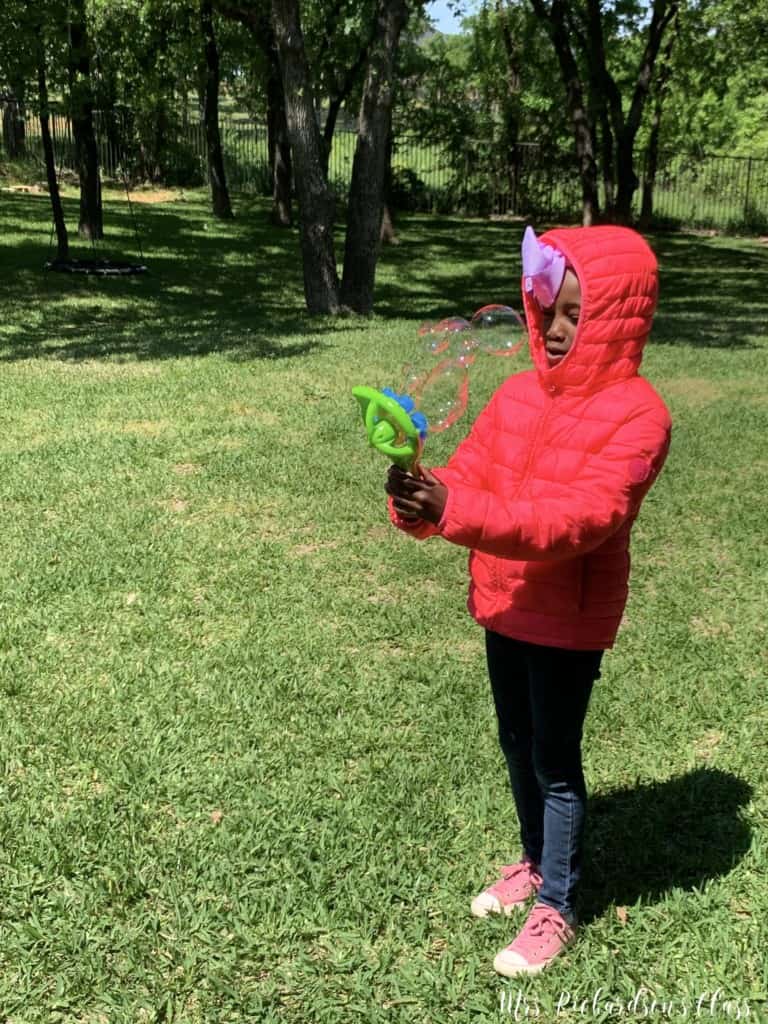
As the parent, you can use the brain break time to prepare for the next activity, get a quick chore done, prepare lunch, or participate in the brain break if you need one, too!
One way to make the day more fun is to let the kids pick an activity to do. Kids love the ability to have choice and enjoy completing the challenge or menu. I like to have my kids complete a menu activity as they’re finishing up lunch and for a little while after. Here are a few ideas:
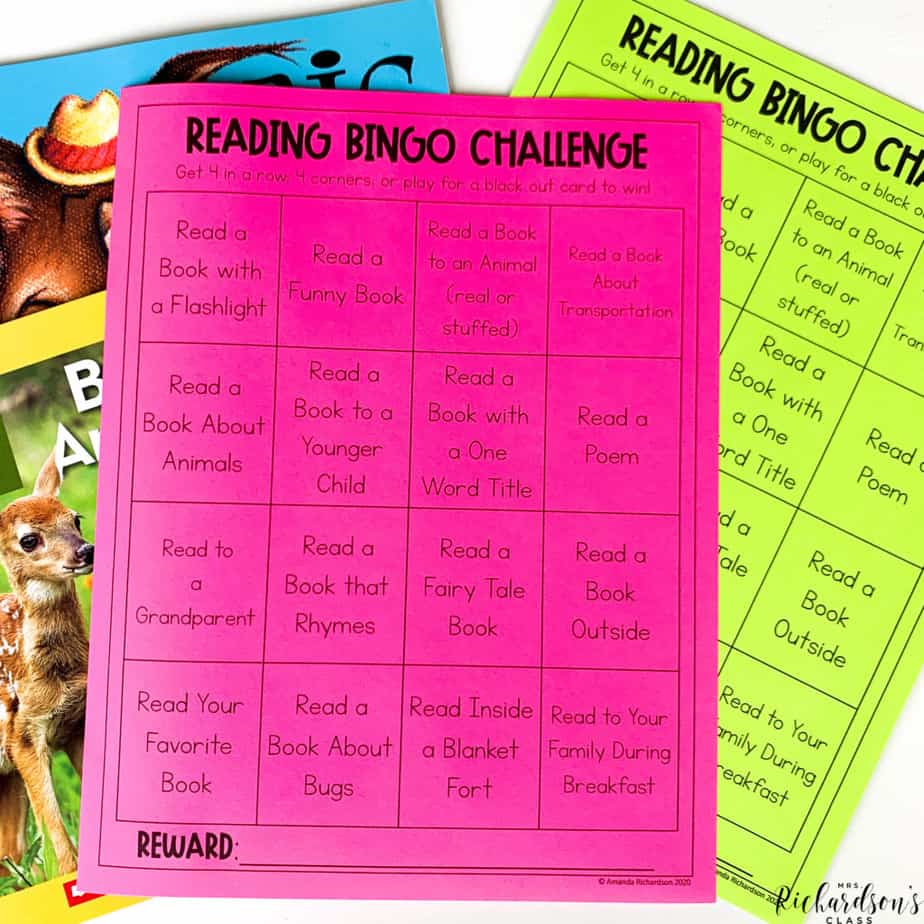
A lot of us have younger siblings at home too, and teaching our older children and entertaining the younger ones can be tricky. I totally understand! There are a ton of activities and resources out there that are directed towards toddlers and preschoolers. Here are few ideas to help manage younger siblings:
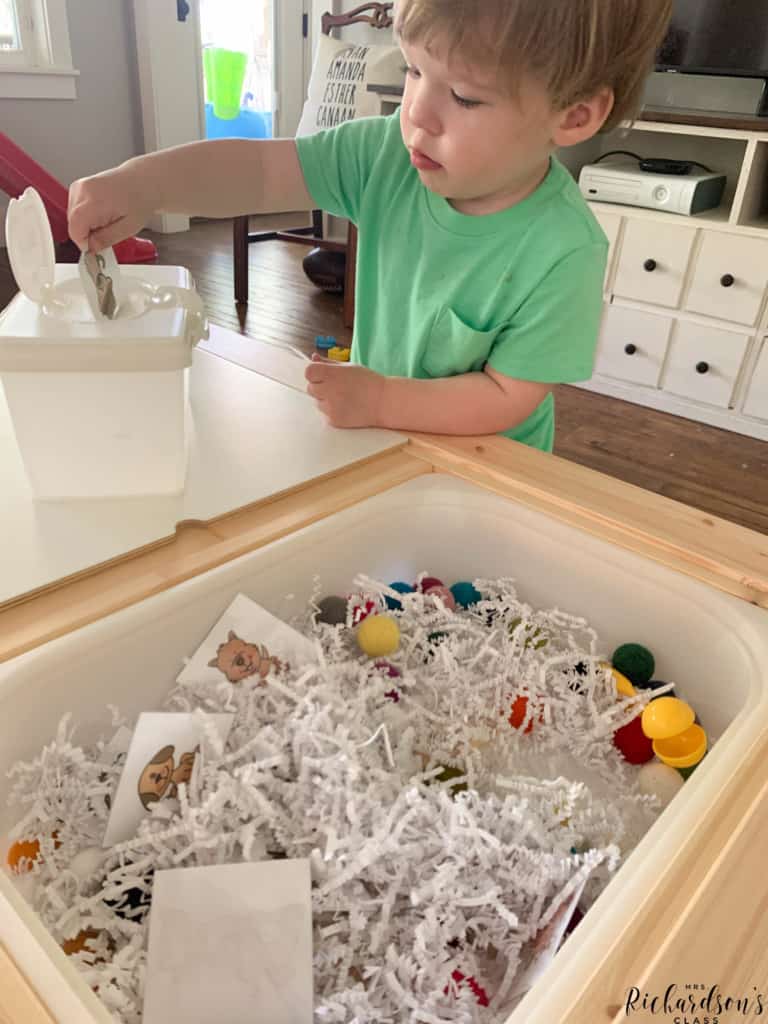
The goal is to do your best every day, and that will look different from day to day. If my toddler is extra fussy one day, it’s harder for me to cover everything I wanted to. And that’s okay!
If your homeschool or distance learning schedule starts to not work for you or go as smoothly as it did at one point, change it up and try again. I love a schedule because it helps hold me accountable, but I also try to remember that there is grace for the difficult time we’re in right now.
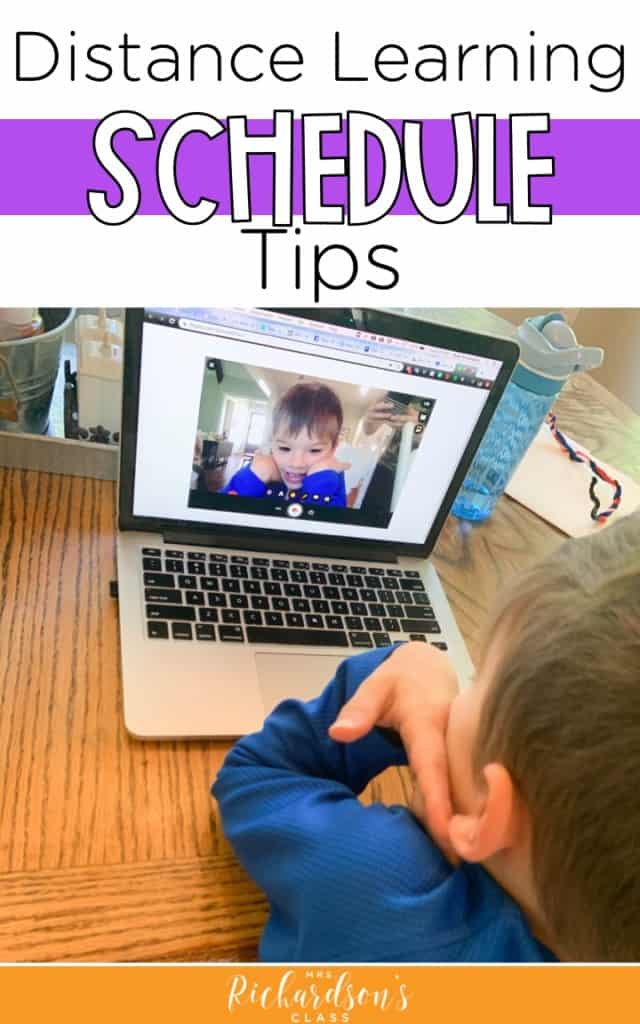
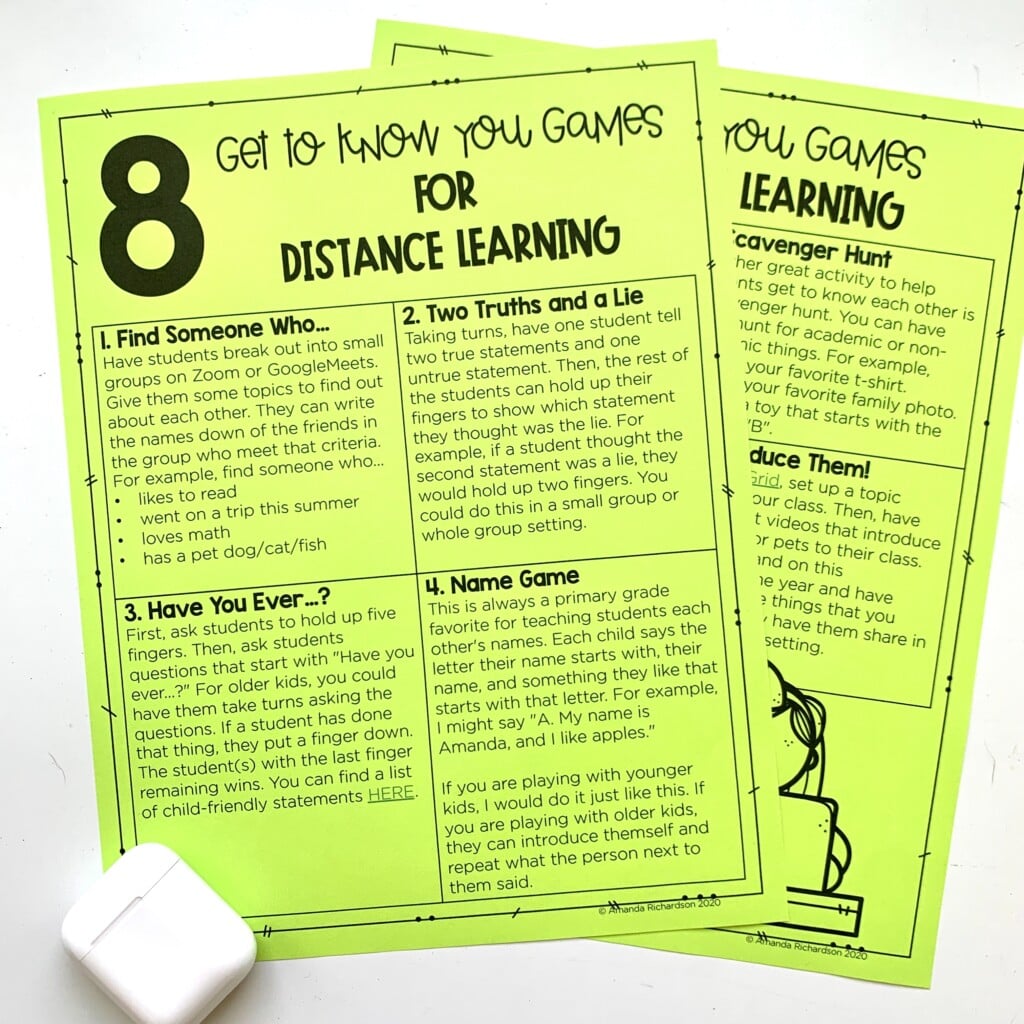

I’m a K-1 teacher who is passionate about making lessons your students love and that are easy to implement for teachers. Helping teachers like you navigate their way through their literacy block brings me great joy. I am a lifelong learner who loves staying on top of current literacy learning and practices. Here, you’ll find the tools you need to move your K-2 students forward!


| Cookie | Duration | Description |
|---|---|---|
| cookielawinfo-checkbox-analytics | 11 months | This cookie is set by GDPR Cookie Consent plugin. The cookie is used to store the user consent for the cookies in the category "Analytics". |
| cookielawinfo-checkbox-functional | 11 months | The cookie is set by GDPR cookie consent to record the user consent for the cookies in the category "Functional". |
| cookielawinfo-checkbox-necessary | 11 months | This cookie is set by GDPR Cookie Consent plugin. The cookies is used to store the user consent for the cookies in the category "Necessary". |
| cookielawinfo-checkbox-others | 11 months | This cookie is set by GDPR Cookie Consent plugin. The cookie is used to store the user consent for the cookies in the category "Other. |
| cookielawinfo-checkbox-performance | 11 months | This cookie is set by GDPR Cookie Consent plugin. The cookie is used to store the user consent for the cookies in the category "Performance". |
| viewed_cookie_policy | 11 months | The cookie is set by the GDPR Cookie Consent plugin and is used to store whether or not user has consented to the use of cookies. It does not store any personal data. |


